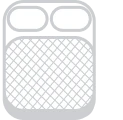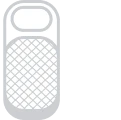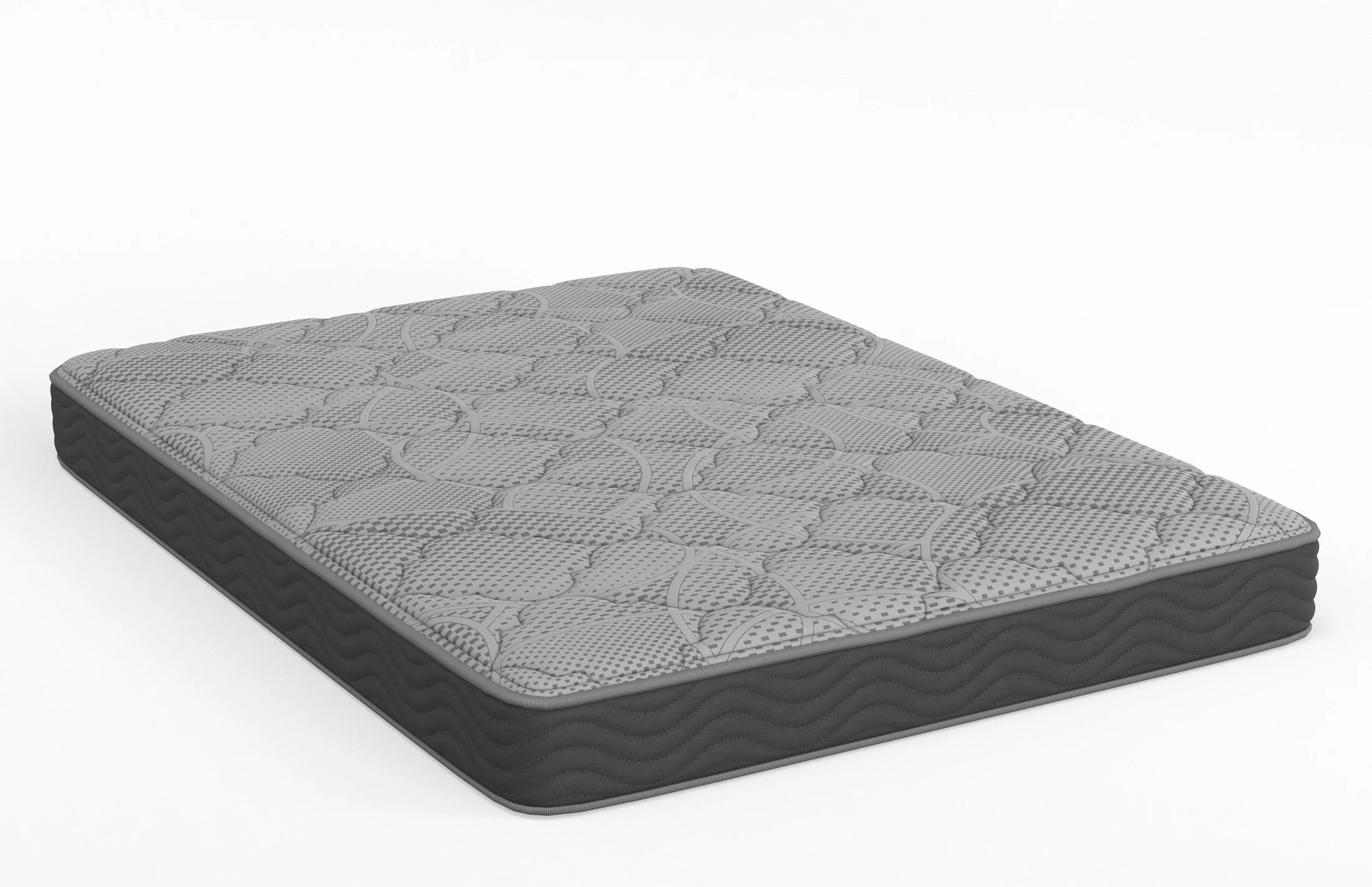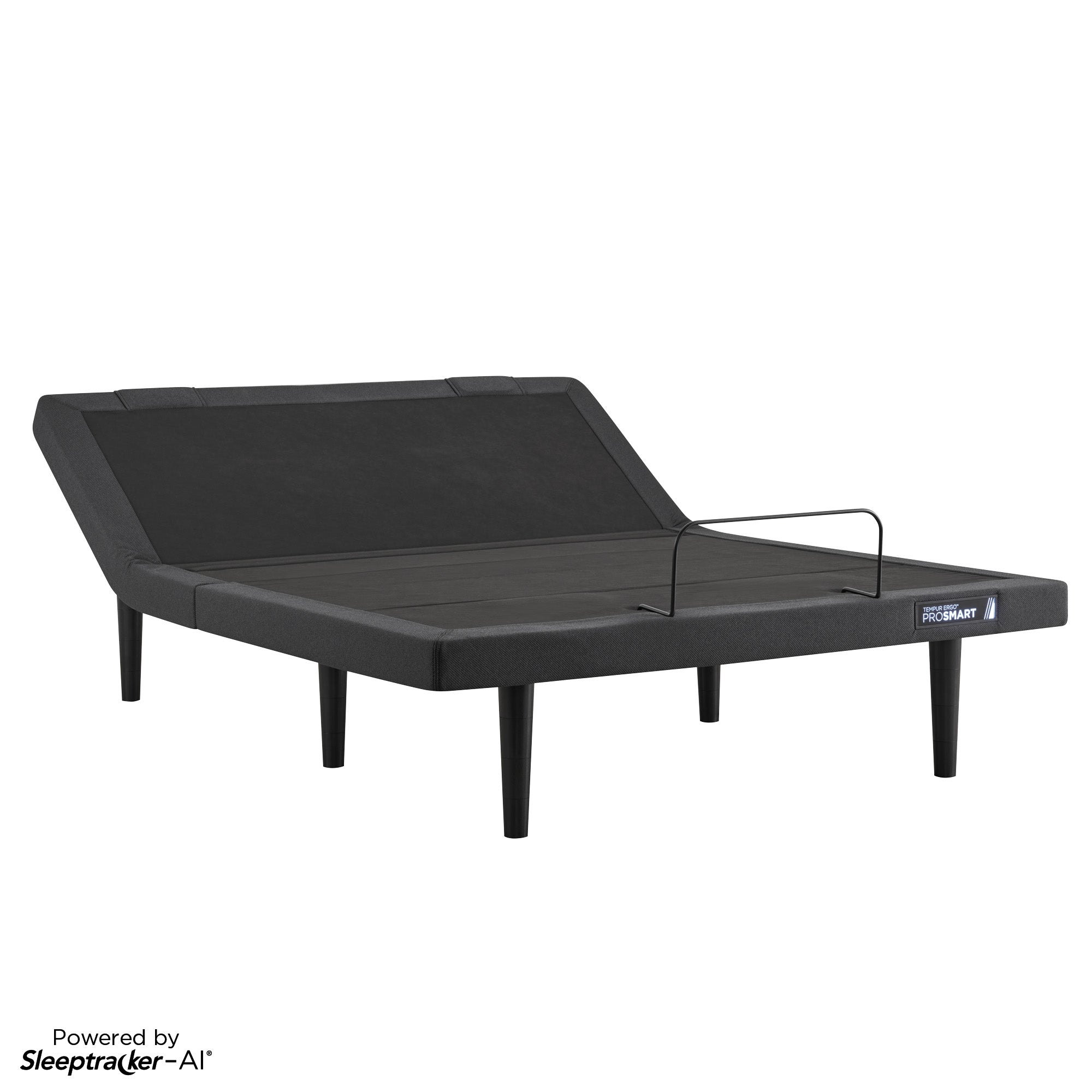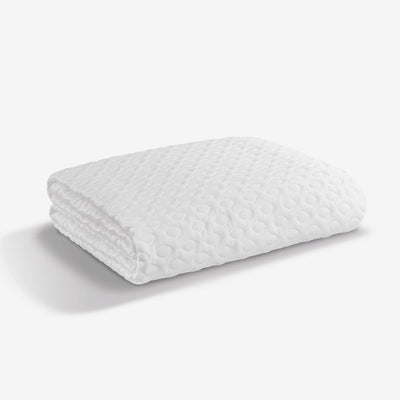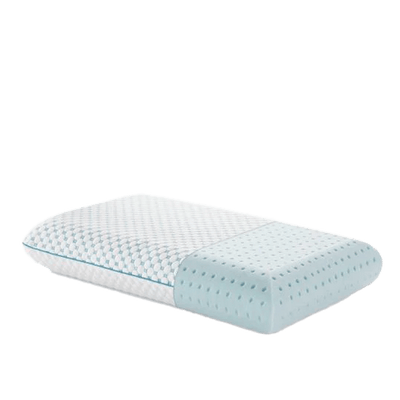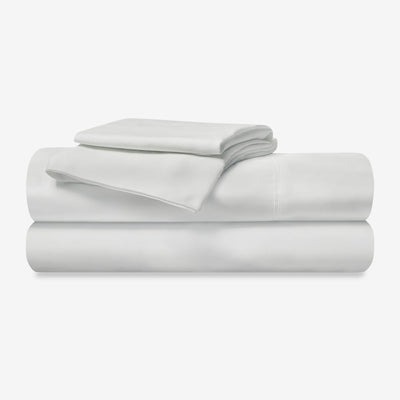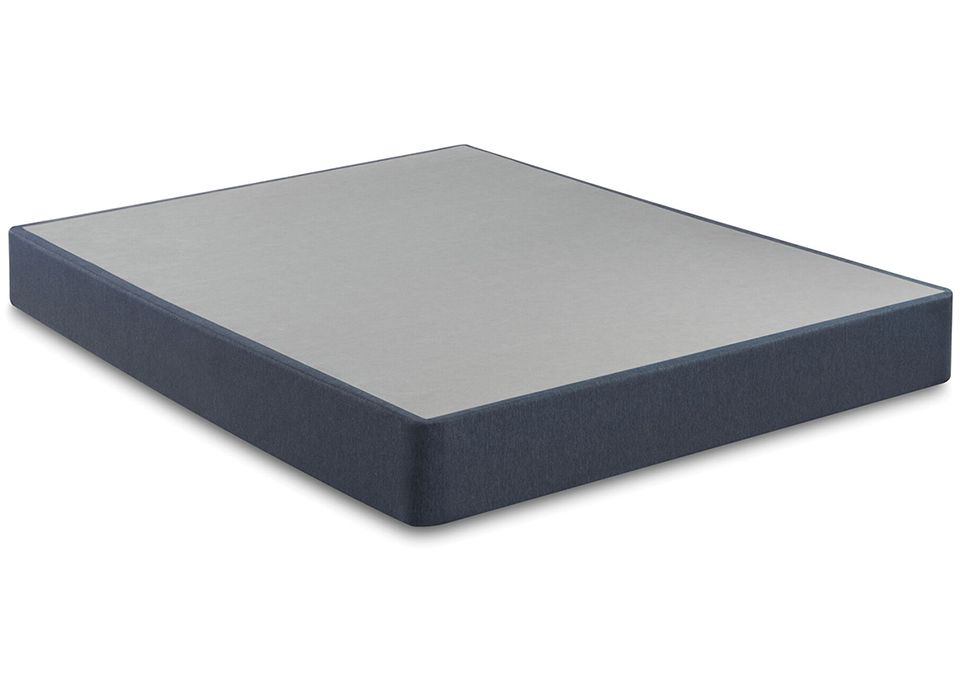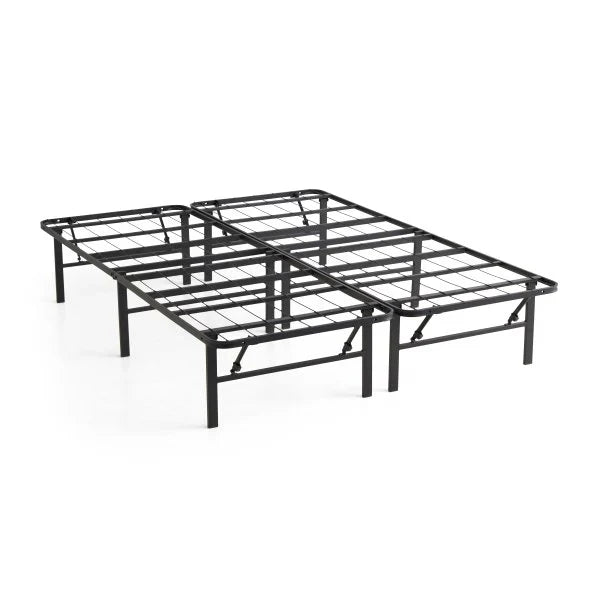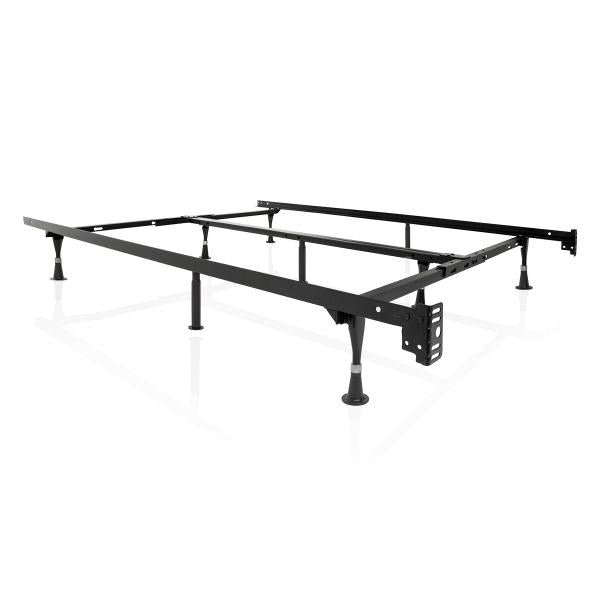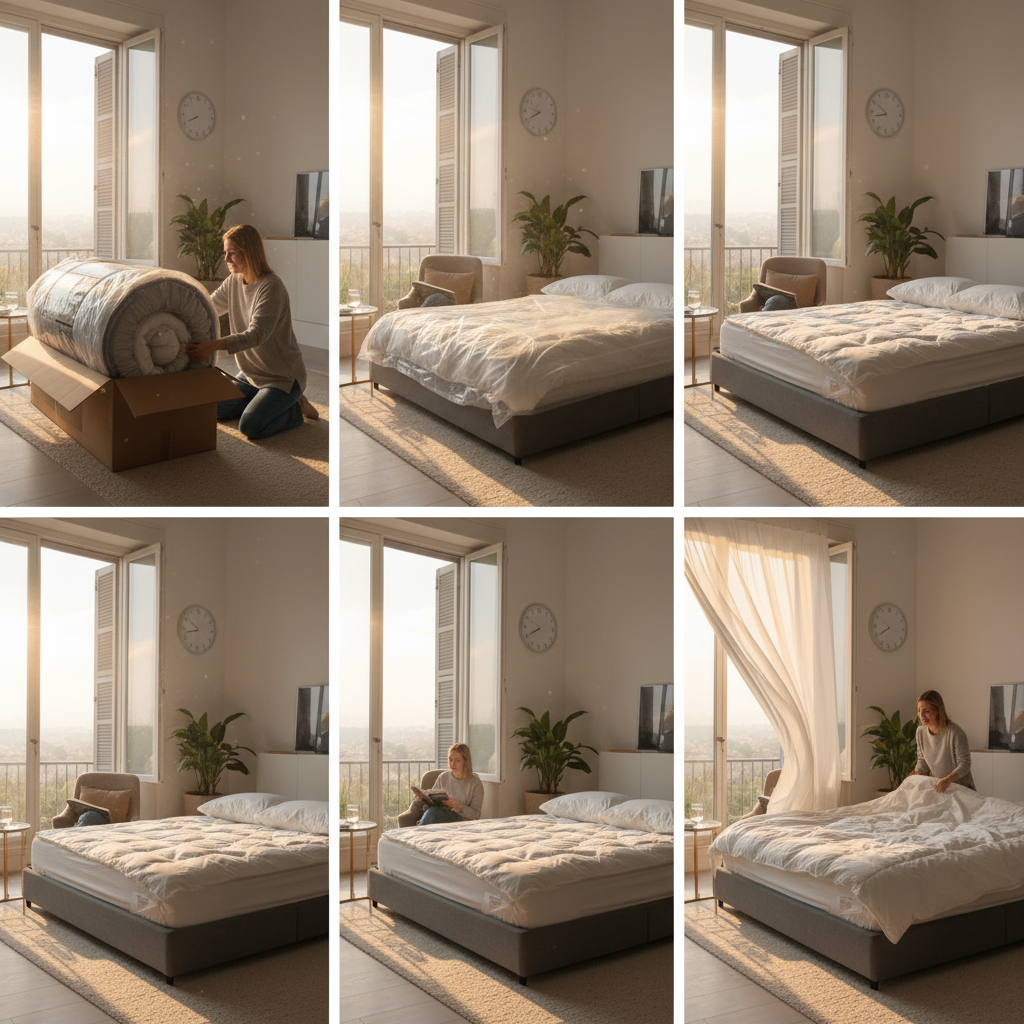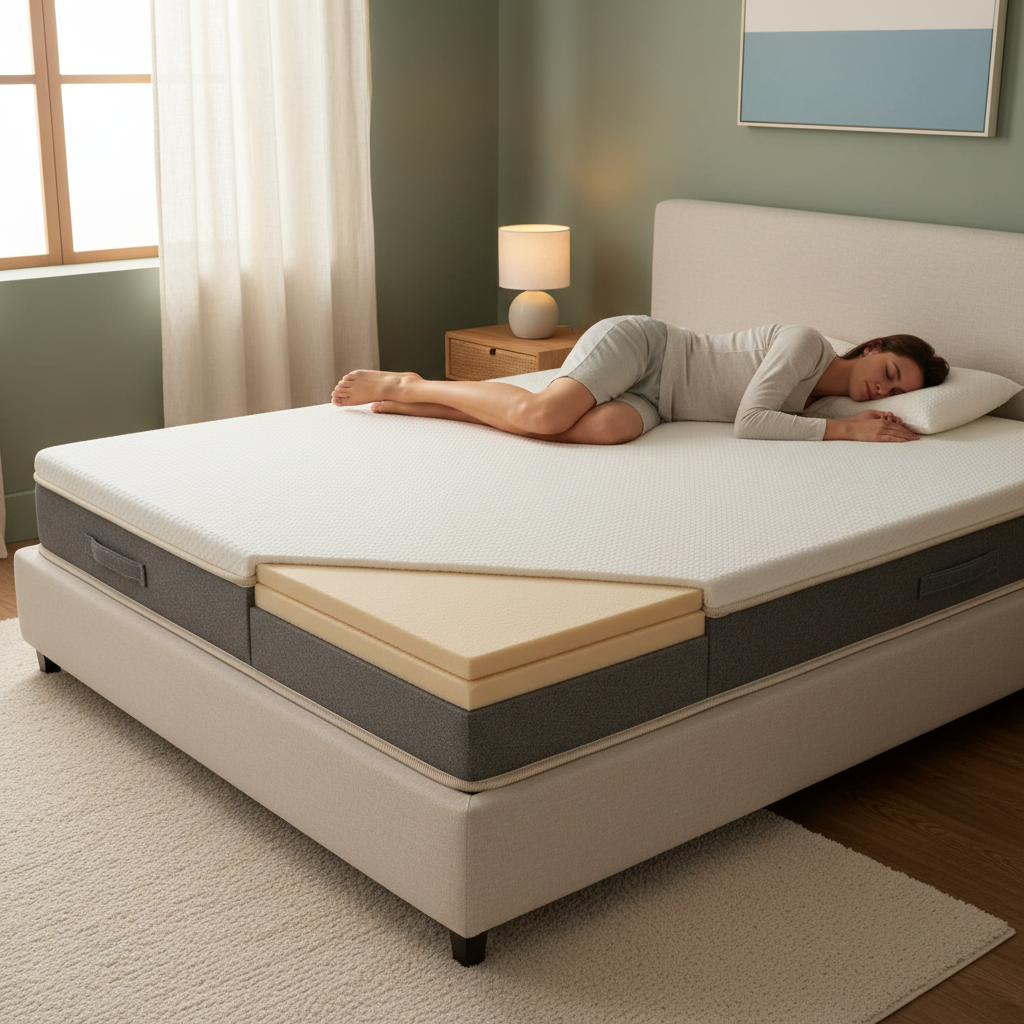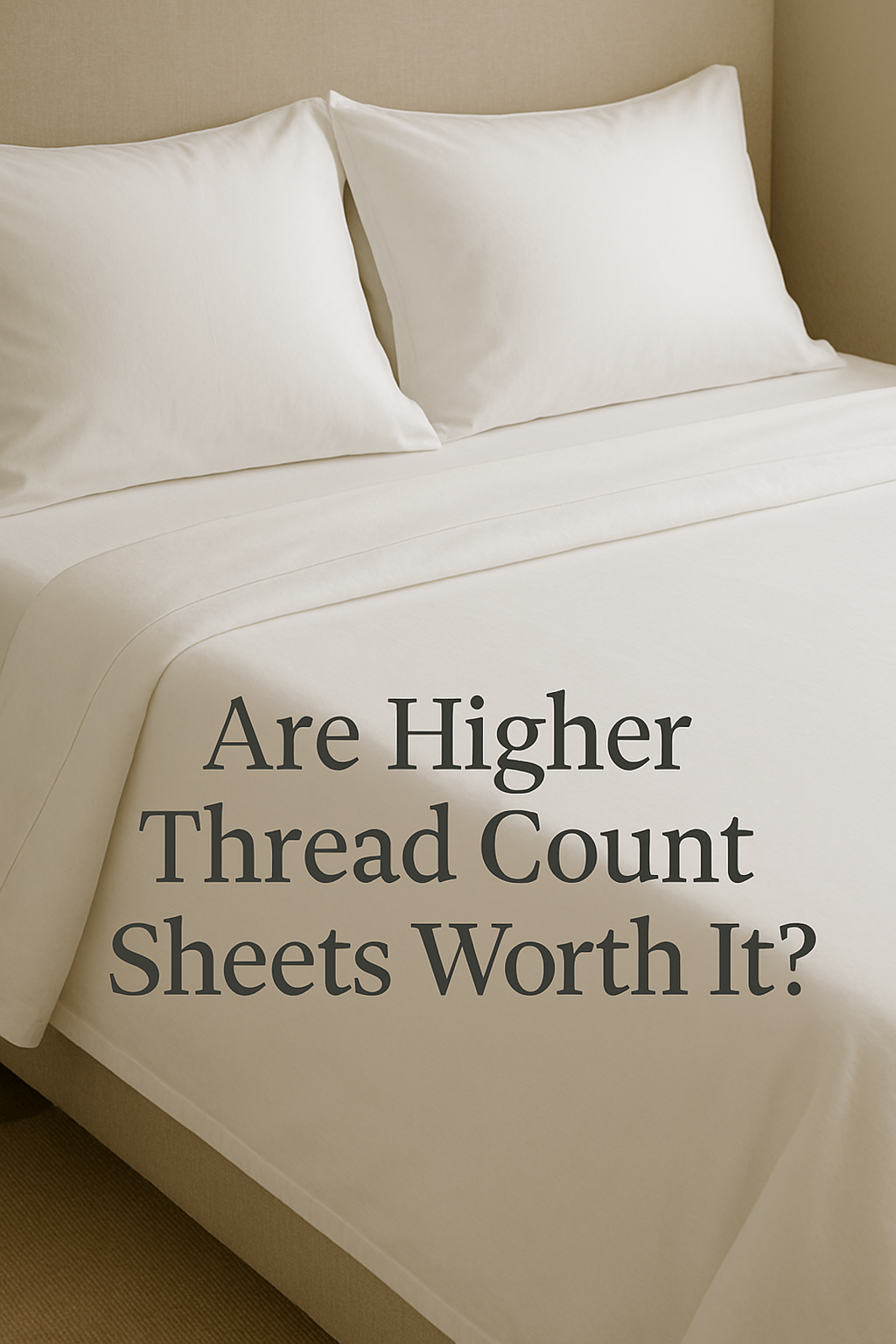
Your sleeping position, your comfort preference, whether you sleep hot or have back pain—these personal details are what truly matter when choosing a mattress. The challenge is matching those needs to a bed that also fits your budget. It’s not about finding the cheapest or most expensive option; it’s about finding the right option. This guide connects your personal sleep style to the reality of the mattress price tag. We’ll show you how your preferences point toward certain types of mattresses and what you can expect to pay, ensuring you invest in a bed that provides personalized comfort for years to come.
How Much Should a Good Mattress Cost?
One of the most commonly asked questions by people who want to buy a new mattress is “how much is a mattress?” Unfortunately, it’s not as simple as giving an amount because there are many factors that affect the price of mattresses. The market offers different types for all budgets – from affordable ones to luxury sleep systems. In this guide, we will look into what makes up the cost of mattresses so you can better understand why they are priced so differently. By the end of this article, you should have an idea about what you will be getting yourself into when shopping for one and how to get good value for your money. So let us take deep dive in mattress pricing world and answer this question- how much does it cost?
Understanding Mattress Price Tiers
When you start shopping for a new mattress, the range of prices can feel overwhelming. To make sense of it all, it helps to think about mattresses in terms of price tiers: budget, premium, and luxury. Each category offers a different level of quality, materials, and longevity. Knowing what to expect from each tier helps you align your budget with your sleep needs. You’re not just buying a mattress; you’re investing in your rest and well-being. Let’s break down what your money gets you at each level, so you can feel confident in your decision and find the perfect match for your bedroom and your wallet.
Budget: $500 to $1,500
This price range is often where people begin their search, and it’s possible to find a decent mattress here, especially for a guest room or a first apartment. At the lower end, around $500, you’ll mostly find basic all-foam or traditional innerspring models. While functional, they may lack the durability and advanced comfort layers of more expensive options. As you move closer to the $1,500 mark, the quality improves significantly, with better materials and more thoughtful construction. At Mattress on Demand, we believe everyone deserves good sleep, which is why we offer flexible financing options to help a higher-quality mattress fit comfortably within your budget.
Premium: $1,500 to $4,000
For many people, this is the sweet spot for finding a high-quality, long-lasting mattress for their primary bedroom. In this tier, you’re investing in superior materials, innovative technology, and better overall construction. You can expect to find advanced hybrid models that combine supportive coils with pressure-relieving foams, as well as features like cooling gels and enhanced edge support. According to industry experts, a quality queen-size mattress typically falls within this range. Brands like Helix, known for their personalized comfort, are great examples of what this tier offers. These mattresses are built to provide consistent support and comfort for years, making them a worthwhile investment in your sleep health.
Luxury: $4,000+
Welcome to the top tier of comfort. Luxury mattresses, priced at $4,000 and above, are crafted with the highest-quality materials and cutting-edge sleep technology. These beds often feature premium materials like natural latex, organic wool, and advanced memory foams, along with intricate, handcrafted details. They are designed for exceptional support, pressure relief, and durability. You’ll also find specialized features like advanced temperature regulation and zoned support systems that cater to different areas of your body. Pairing one of these mattresses with an adjustable base can create a truly customized sleep system. While it's a significant investment, a luxury mattress is built to deliver an unparalleled sleep experience for a decade or more.
What Really Determines a Mattress Price?
Knowing what factors affect pricing will help you make informed decisions before making any purchases; below are some key elements which contribute towards determining how much does a mattress cost:
Size: From Twin to California King
Size is one among several obvious aspects affecting prices; usually larger beds cost more than smaller ones due mainly because they require additional materials during production which increase costs incurred through manufacturing process.. Here is breakdown of common sizes available in stores today:
| Mattress Size | Dimensions (inches) | Typical Price Range |
| Twin | 38×75 | $100 - $1,000 |
| Twin XL | 38×80 | $150 - $1,200 |
| Full | 54×75 | $200 - $1,500 |
| Queen | 60×80 | $250 - $2,500 |
| King | 76×80 | $350 - $3,500 |
| California King | 72×84 | $350 - $3,500 |
Please note that these ranges serve only as estimates; other considerations like brand names or features may also significantly alter these figures.
The Materials Inside
The type of material(s) employed plays major role in setting rates charged for such products; thus higher quality substances generally lead to more pricey goods being offered.. Below mentioned are some popularly used materials found inside most beds along with their respective effects regarding pricing issues:
Innerspring
This is often considered cheapest option among traditional models since it relies on metal coils system for support accompanied by different levels of padding on top.. Depending on coil quality plus other enhancements, costs can range from $100 up to around 2000 dollars.
Memory Foam
These types are known because they conform closely around sleeper’s body hence relieving pressure points thereby allowing restful sleep throughout night. Prices usually vary depending upon density as well as overall quality used; basic varieties could begin at approximately two hundred fifty bucks whereas premium selections might cost above four thousand dollars.
Latex
Latex rubber beds tend to be more costly due their durability and environment friendliness aspects involved.. In particular natural latex mattresses may be priced between one thousand to 4000 dollars or even higher depending on purity level achieved during manufacturing process and other materials utilized alongside it.
Hybrid
Hybrids combine inner springs with layers made either from memory foam or latex – this aims at providing both supportiveness offered by coils together with comfort derived from these soft substances wrapped around them. They fall into medium-high category price wise typically retailing between one thousand three hundred to three thousand dollars per unit.
Airbed
Airbeds allow users adjust firmness levels according individual preferences thus making them among most expensive types available.. Quality airbeds can go for anything starting at fifteen hundred going upto five thousand dollars and beyond.
Brand and Reputation
It is the brand name that can affect the cost of a mattress. Tempur-Pedic, Stearns & Foster or Hastens are some top luxury brands which charge higher prices because they are believed to be of good quality and have prestige as brands. Some models of these high-end mattresses may cost more than $100,000 while others start at around $2,000.
On the contrary new mattress companies selling directly to consumers such as Casper, Purple or Tuft & Needle tend to offer their products at lower rates compared with traditional retail stores; usually between $500-$2k depending on size/ type selected.
Technology and Special Features
Special features and advanced technology can make a mattress expensive. For example:
- Cooling technologies (e.g., gel-infused foams or phase-change materials)
- Smart mattresses that monitor sleep patterns
- Adjustable firmness settings
- Motion isolation technology
- Edge support systems
Depending on specific features used and the brand itself this type may cost anywhere from $1k-$5k+.
Your Sleep Style and Preferences
Beyond the materials and brand names, the right mattress for you really comes down to personal comfort. How you sleep and what feels good are huge factors in finding the perfect match. These preferences don't just affect your comfort; they also guide you toward certain types of mattresses, which can influence the price. Understanding your own needs is the first step to making a smart investment in your sleep. Let's look at the two biggest personal factors that will shape your decision: your primary sleeping position and your ideal firmness level.
Your Primary Sleeping Position
Think about the position you're in when you usually wake up. Are you on your side, back, or stomach? Your main sleeping position is a critical piece of the puzzle because it determines where your body needs the most support to maintain healthy spinal alignment. For instance, side sleepers often need a mattress with enough give to cushion their shoulders and hips, preventing painful pressure points. Back sleepers, however, typically benefit from a firmer surface that supports the natural curve of the spine. The right mattress for your sleep style is the foundation of a restful night and pain-free morning.
Your Preferred Firmness Level
Firmness is all about that initial feel when you lie down. Do you love the feeling of sinking into a plush, cloud-like bed, or do you feel more comfortable resting on top of a solid, stable surface? There’s no right or wrong answer, as this choice is completely subjective. A softer mattress can provide incredible comfort and pressure relief, contouring to your body's curves. On the other hand, a firmer mattress can offer robust support that many people, especially those with back pain, find essential for quality sleep. Finding that "just right" feel is a personal journey, and it's a key factor in ensuring your new bed meets your expectations.
Where It's Made
Where it is made affects how much one should pay for any given kind of bed . Countries with cheap labor tend produce them inexpensively while those located in places with higher living standards like US/Europe will sell theirs costly relative to other nations. However closer-to-home manufacturers might offer stricter controls over design/manufacturing processes in addition savings incurred through reduced transportation costs etcetera
Online vs. In-Store: Where Are the Better Prices?
The mattress business and pricing have been disrupted to a great extent by online retailers. Let’s look at online and in-store mattress shopping:
Buying a Mattress Online
Pros:
- Lower prices are often due to less overhead
- Sales are frequent and there are many promotions
- Comparing is made easy
- Trial periods that may be as long as 100 nights or even more
- Free shipping and returns
Cons:
- You can’t try before you buy.
- Returning a big item can be a hassle.
- In-Person Store Mattress Shopping
Buying a Mattress In-Store
Pros:
- Can try before you buy
- Sales staff provide personalized assistance
- May have room for haggling on price
- Immediate availability—no waiting for shipping!
Cons:
Overhead costs make them more expensive overall
-Limited selection compared to what’s available online
-Salespeople may pressure customers into buying something they don’t need or want
-Trial period is shorter; usually only lasts between 30 - 90 days.
On average, an equivalent mattress bought at a store will cost between ten and fifty percent more than one purchased online would. Nevertheless, it is important for individuals who value the ability to test out products personally prior purchase that this benefit should not be overlooked when calculating costs.
Think in terms of long-term value: Consider a costlier mattress that lasts longer, it may be better to have this than a cheaper one which needs replacing sooner.
Look into financing options: Some retailers offer interest-free financing which can help make higher quality mattresses more affordable.
Smart Shopping: Finding Deals and Guarantees
A new mattress is an investment in your well-being, and like any big purchase, you want to get the best possible value. Being a savvy shopper isn't just about finding the lowest price; it's about understanding what goes into a great deal. This includes knowing when to shop, what policies protect your purchase, and which services can make the entire process smoother. With a little strategy, you can feel confident that you’re not only saving money but also choosing a mattress and a retailer that will support you for years to come.
Actionable Ways to Save Money
Finding a high-quality mattress that fits your budget is entirely possible without waiting for a stroke of luck. There are several practical ways to find a great price on the perfect bed. Timing your purchase correctly, asking the right questions, and exploring all payment options can lead to significant savings. These simple steps can help you secure a fantastic deal on a mattress you'll love.
Shop During Holiday Sales
Major holidays are one of the best times to buy a mattress. Retailers often roll out their biggest promotions during holiday weekends like Memorial Day, Labor Day, the 4th of July, and Black Friday. Planning your purchase around these sales events can save you hundreds of dollars on top-rated brands. Keep an eye out for local ads and online announcements to catch the best deals in the Katy and Richmond areas.
Ask About Last Year's Models
When new mattress models arrive, stores need to make space for them. This is a perfect opportunity for you to save. Don't hesitate to ask a sales associate if they have any floor models or previous year's models available at a discount. These mattresses are brand new and in perfect condition but are often priced lower to clear out inventory, giving you access to premium quality for less.
Check if You Can Use an HSA or FSA
If a doctor recommends a mattress to treat a specific medical condition, like chronic back pain, you might be able to use funds from a Health Savings Account (HSA) or Flexible Spending Account (FSA). This allows you to pay with pre-tax dollars, which can be a substantial saving. You'll likely need a letter of medical necessity from your doctor, so be sure to check the specific requirements of your account provider first.
Important Policies to Look For
A great price is just the beginning. The best retailers stand behind their products with policies that give you peace of mind. Before you buy, make sure you understand the store's guarantees and warranties. These policies are your safety net, ensuring that you’ll be happy with your mattress long after you bring it home. They reflect a company's confidence in its products and its commitment to customer satisfaction.
Price Match Guarantee
A price match guarantee is a straightforward promise: if you find the identical mattress advertised for less at a competing retailer, the store will match that price. This policy takes the guesswork out of finding the best deal and assures you that you're getting a competitive price. It’s a strong indicator that a retailer is confident in its pricing and is committed to offering you the best value.
Comfort Guarantee and Trial Periods
It can take several weeks for your body to adjust to a new sleep surface. That's why a comfort guarantee or an in-home trial period is so important. These policies typically give you around 90 to 120 days to sleep on your new mattress to ensure it's the right fit. If you're not completely comfortable, you can exchange it. This removes the pressure of making a perfect decision on the spot.
Warranty
A manufacturer's warranty protects your investment against defects like excessive sagging or flaws in craftsmanship. Most quality mattresses come with a warranty of at least 10 years. Be sure to read the terms, as you'll often need to use a mattress protector to keep the warranty valid. A strong warranty is a testament to the mattress's durability and the brand's commitment to quality.
Helpful Shopping Tools and Services
Finding the right mattress is easier than ever, thanks to modern tools and services designed to simplify the process. From personalized online quizzes that narrow your options to delivery services that do all the heavy lifting, retailers are making the experience more convenient. Taking advantage of these resources can help you make a more informed choice with far less stress.
Online Sleep Quizzes
Feeling overwhelmed by all the choices? Many retailers offer online quizzes to help you find your perfect match. Here at Mattress on Demand, we developed a mattress finder AI quiz that asks a few simple questions about your sleep position, comfort preferences, and any issues you're facing, like back pain. In just a few minutes, it provides personalized recommendations to serve as a great starting point for your search.
Delivery and Setup Services
Getting your new mattress home shouldn't be a workout. Most retailers offer delivery services, and many provide "white glove" delivery, where a team brings the mattress into your home, sets it up, and removes your old one. This service is especially valuable when purchasing larger items like a king-size mattress or a heavy adjustable base, ensuring a seamless and hassle-free transition to better sleep.
Cheap vs. Expensive: Is a Higher Price Worth It?
While it might be tempting to go for the least expensive mattress available, it’s important to think about what that means over time. Here is a cost comparison between cheap and costly beds:
The Case for a Budget-Friendly Mattress
Pros:
- Lower upfront cost
- Ideal for temporary situations like guest rooms or college dorms
Cons:
- Shorter lifespan (3 to 5 years on average)
- Cheaper materials can break down quickly
- Provides less comfort and support, which may lead to poor sleep quality
- May need replacement more often thus increasing long term expenses
Tips for Shopping on a Tight Budget
Finding a great mattress without breaking the bank is totally possible. A smart first step is to always keep an eye out for holiday sales and special promotions, as this is when you can often find higher-quality beds at a lower price point. It's also helpful to think about long-term value. A mattress that costs a bit more upfront but lasts for ten years can be a better investment than a cheaper one you have to replace in three. If your budget leads you to a simpler, firmer mattress, remember you can always customize your comfort. Pairing it with the right pillows and cozy bedding can make a huge difference in your overall sleep experience, giving you that plush feel you're looking for.
When to Invest in a Premium Mattress
Pros:
- Higher-quality ingredients provide superior comfort and support
- Lasts much longer (usually 8 – 10+ years)
- More durable with resistance against sagging over time
- Better warranties and customer service are often offered alongside
- Can include advanced features for enhanced sleeping experience
Cons:
- High initial price tag
- Overkill for infrequently used beds
When considering cost, divide by number of years you’ll use it to get price per year. For example:
A $500 bed that lasts for 4 years costs $125 per year while…
A $2,000 one last twice as long at ten years makes its annual expense $200 only.
In this case even though annually more expensive, any potential improvement on rest during all those nights outweighs extra dollars spent at once.
Remember to Budget for Accessories
Your new mattress is the star of the show, but it needs a great supporting cast to truly shine. When you're planning your purchase, it's easy to focus only on the mattress price tag. However, it's smart to also budget for quality accessories that complete your sleep system. Think about items like supportive pillows that align with your sleeping position, a durable mattress protector to guard against spills and allergens, or even an adjustable base for customized comfort. These pieces aren't just afterthoughts; they are essential for getting the most out of your investment. A quality protector, for instance, is crucial for keeping your mattress clean and ensuring your warranty stays valid. Just like a premium mattress, investing in better accessories from the start can lead to better sleep and longer-lasting products, creating a cohesive sleep environment for years to come.
FAQ
Q1: Can I negotiate the price of a mattress?
Yes, in many cases. Most especially when you are shopping in-store. The prices of mattresses usually are marked up highly which creates room for bargaining. However, fixed prices are common with online retailers but they often have sales and promotions.
Q2: Is it worth buying a mattress online without trying it first?
Many people buy mattresses online successfully because of generous trial periods often 100 nights or more and free returns nevertheless if you have specific needs or preferences trying a mattress in person may be beneficial.
Q3: How much should I expect to spend on a good quality mattress?
For a queen size bed, you can generally find good quality options between $800-$1500 however this depends on the type of mattress as well as your needs.
Q4: Are there any health risks associated with cheap mattresses?
Cheaply priced mattresses aren't inherently hazardous but they may use lower quality materials that break down quicker leading to insufficient support and poor sleep quality. Some also employ chemicals which could irritate sensitive individuals.
Q5: How do I know if a mattress is worth its price?
Check out what materials were used check customer reviews compare across different retailers even look at warranties and trial periods offered by manufacturers for an idea of how much confidence they have in their product.
Finding the Right Mattress at the Right Price
The question “How much is a mattress?” does not have one straight answer since there is such wide variation when it comes pricing – anything between less than $100 all the way up to over $100,000 could be charged depending on what features or materials are involved. You will need to consider your budget along with sleep requirements and personal preference before settling for any particular cost point.
Although going for cheapest possible option might seem attractive at first glance, bear in mind long term value too; higher quality products may cost more initially but offer benefits such as improved restfulness durability while being more economical eventually.
Don't forget that setting up delivery and potentially buying other accessories can add significantly to overall spend when getting a new mattress hence take into account these factors alongside any discounts offered during sales events so as not miss out on savings from different stores but don’t shy away from haggling if need be.
Ultimately, this is an investment into healthiness through comfort therefore understanding how pricing works and what suits individual needs should help in finding the most suitable one for oneself at affordable rates which provides restful nights’s sleep.
More Helpful Resources
For additional information about prices and types of mattresses see:
Nationwide Shipping Mattresses https://shopmattressondemand.com/collections/free-shipping-mattress-sale
Consumer Reports’ Mattress Buying Guide: https://www.consumerreports.org/cro/mattresses/buying-guide/index.htm
Sleep Foundation's How to Choose a Mattress: https://www.sleepfoundation.org/best-mattress/how-to-choose-a-mattress
National Sleep Foundation's Mattress Guide: https://www.sleepfoundation.org/mattress-information
Better Sleep Council: https://bettersleep.org/
GoodBed's Mattress Buying Guide: https://www.goodbed.com/guides/mattress-buying-guide/
Please note that external websites may have outdated or inaccurate information due to changes in technology or market trends over time.
Key Takeaways
- Calculate the long-term investment: A premium mattress that lasts ten years is often more cost-effective than a budget option you have to replace every few years. Think about the price per year, not just the initial sticker price.
- Match the mattress to your sleep style: Your sleep position and firmness preference are the best guides for finding the right mattress type, which helps you invest in personalized comfort that truly supports you.
- Look for value beyond the discount: A great deal includes more than a low price. Get the best value by shopping during holiday sales and choosing retailers that offer strong warranties, in-home trial periods, and helpful services.
Related Articles
- How Much Is a Mattress: A Comprehensive Guide to Mattress Pricing – Mattress on Demand
- How Much Should I Spend on a Good Quality Mattress – Mattress on Demand


